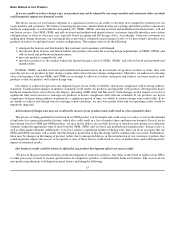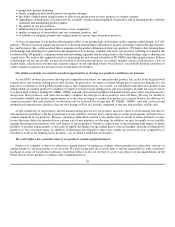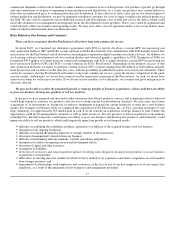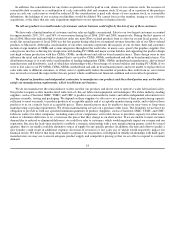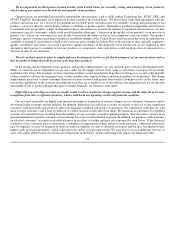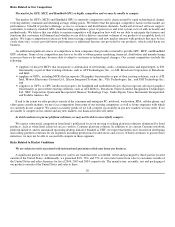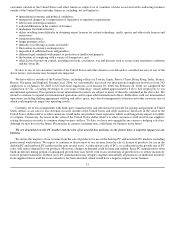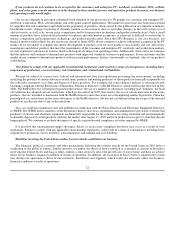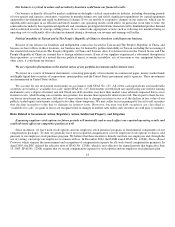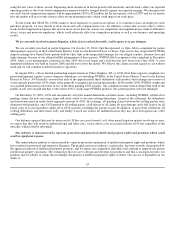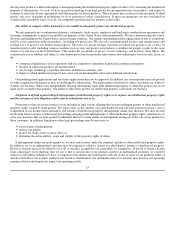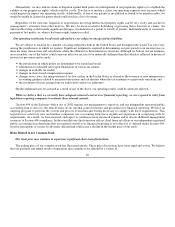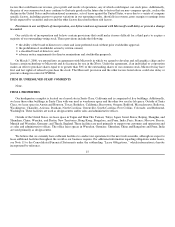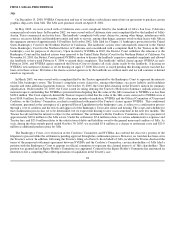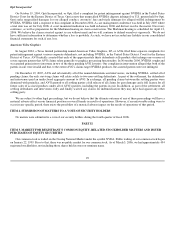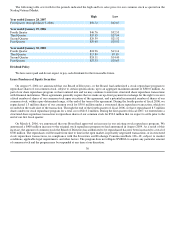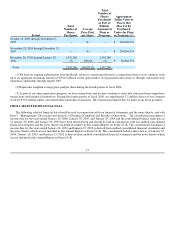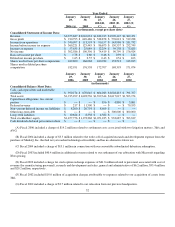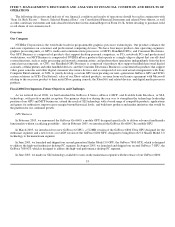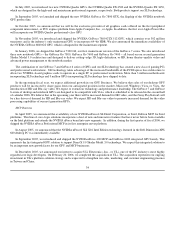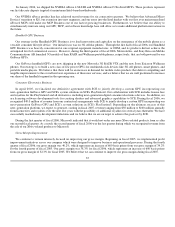NVIDIA 2006 Annual Report Download - page 31
Download and view the complete annual report
Please find page 31 of the 2006 NVIDIA annual report below. You can navigate through the pages in the report by either clicking on the pages listed below, or by using the keyword search tool below to find specific information within the annual report.
develop new products without infringing or misappropriating the intellectual property rights of others or by licensing the intellectual
property of third parties. As such, we have licensed technology from third parties for incorporation into our products, and expect to
continue to enter into license agreements with third parties for future products. These licenses may result in royalty payments to third
parties, the cross licensing of technology by us or payment of other consideration. If these arrangements are not concluded on
commercially reasonable terms, or at all, our competitive position and our business could suffer.
Our ability to compete will be harmed if we are unable to adequately protect our intellectual property.
We rely primarily on a combination of patents, trademarks, trade secrets, employee and third−party nondisclosure agreements and
licensing arrangements to protect our intellectual property in the United States and internationally. We have numerous patents issued,
allowed and pending in the United States and in foreign countries. Our patents and pending patent applications relate to technology
used by us in connection with our products, including our processors. We also rely on international treaties and organizations and
foreign laws to protect our intellectual property. The laws of certain foreign countries in which our products are or may be
manufactured or sold, including various countries in Asia, may not protect our products or intellectual property rights to the same
extent as by the laws of the United States. This makes the possibility of piracy of our technology and products more likely. We
continuously assess whether and where to seek formal protection for particular innovations and technologies based on such factors as
the:
• commercial significance of our operations and our competitors' operations in particular countries and regions;
• location in which our products are manufactured;
• our strategic technology or product directions in different countries; and
• degree to which intellectual property laws exist and are meaningfully enforced in different jurisdictions.
Our pending patent applications and any future applications may not be approved. In addition, any issued patents may not provide
us with competitive advantages or may be challenged by third parties. The enforcement of patents by others may harm our ability to
conduct our business. Others may independently develop substantially equivalent intellectual property or otherwise gain access to our
trade secrets or intellectual property. Our failure to effectively protect our intellectual property could harm our business.
Litigation to defend against alleged infringement of intellectual property rights or to enforce our intellectual property rights
and the outcome of such litigation could result in substantial costs to us.
From time to time we receive notices or are included in legal actions alleging that we have infringed patents or other intellectual
property rights owned by third parties. We expect that, as the number of issued hardware and software patents increases, and as
competition in our product lines intensifies, the volume of intellectual property infringement claims may increase. We may become
involved in future lawsuits or other legal proceedings alleging patent infringement or other intellectual property rights violations by us
or by our customers that we have agreed to indemnify them for certain claims of infringement arising out of the sale of our products to
these customers. In addition, litigation or other legal proceedings may be necessary to:
• assert claims of infringement;
• enforce our patents
• protect our trade secrets or know−how; or
• determine the enforceability, scope and validity of the propriety rights of others.
If infringement claims are made against us, we may seek licenses under the claimants' patents or other intellectual property rights.
In addition, we or an indemnified customer may be required to obtain a license to a third parties' patents or intellectual property.
However, licenses may not be offered to us at all or on terms acceptable to us, particularly by competitors. If we fail to obtain a license
from a third party for technology that we use or that is used in one of our products used by an indemnified customer, we could be
subject to substantial liabilities or have to suspend or discontinue the manufacture and sale of one or more of our products either of
which could reduce our revenue and harm our business. Furthermore, the indemnification of a customer may increase our operating
expenses which could negatively impact our operating results.
25


